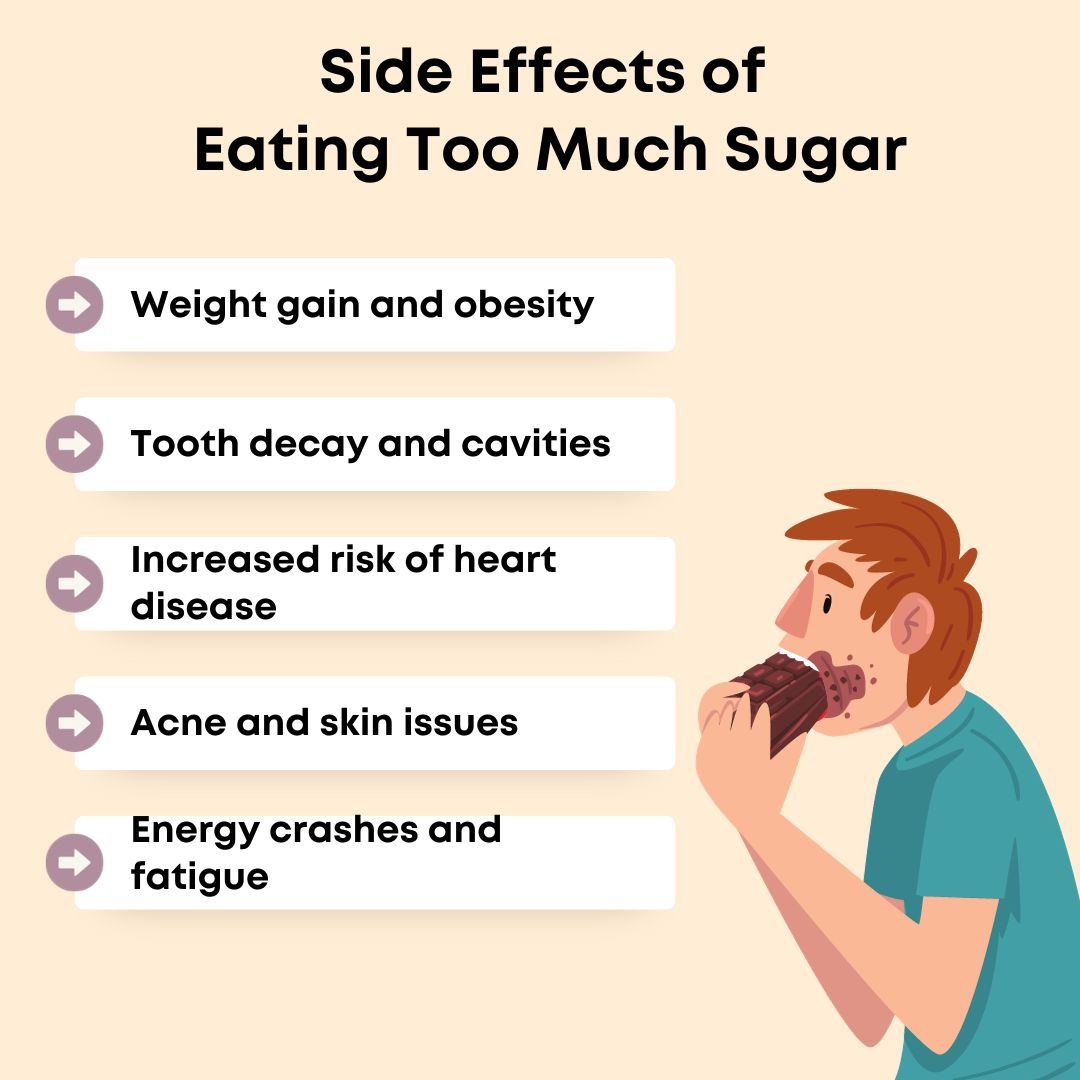
Sugar cravings can feel overpowering, especially in the middle of a long afternoon or after a stressful day. While it’s completely normal to crave sweets from time to time, constant sugar cravings may lead to energy crashes, mood swings, and unhealthy weight gain. Fortunately, there are natural and sustainable ways to reduce your dependence on sugar—without feeling deprived.
In this guide, we’ll explore why sugar cravings happen and how you can manage them naturally through nutrition, lifestyle changes, and smart strategies.
Why Do We Crave Sugar?
Sugar cravings often come from a mix of biological, emotional, and habitual factors. Understanding the root cause can help you make more effective choices.
Common causes of sugar cravings:
- Blood sugar imbalances: When your blood sugar drops, your body craves quick energy—like sugar.
- Lack of nutrients: Deficiencies in magnesium, chromium, or B-vitamins may trigger sugar cravings.
- Emotional eating: Stress, boredom, or emotional lows can lead to seeking sugar for comfort.
- Habitual consumption: Eating sugary foods regularly reinforces the habit and creates dependency.
1. Eat Balanced, Protein-Rich Meals
Protein is key to keeping blood sugar stable and reducing sugar cravings. Meals high in refined carbs or lacking in protein lead to spikes and crashes that trigger the urge for quick sugar fixes.
What to do:
- Include a source of protein (eggs, lentils, fish, yogurt, nuts) in every meal.
- Pair complex carbs (like quinoa or brown rice) with protein and healthy fats.
Try This:
Greek yogurt with berries and chia seeds for breakfast or a boiled egg and hummus as a snack.
2. Don’t Skip Meals
Skipping meals can lead to blood sugar dips, which often result in strong sugar cravings later in the day. Keeping your body properly fueled is essential for curbing the urge for sweets.
Tips:
- Eat every 3–4 hours.
- Plan ahead to avoid long gaps between meals.
- Always carry a healthy snack like mixed nuts or a banana with almond butter.
3. Stay Hydrated
Sometimes, what feels like a sugar craving is actually dehydration. Thirst and hunger signals are often confused, especially when you're low on energy.
What to do:
- Drink a glass of water before reaching for sweets.
- Aim for 8–10 glasses of water a day, more if you’re active or in a hot climate.
- Add lemon or mint to your water for flavor without sugar.
4. Choose Natural Sweet Alternatives
If you’re craving something sweet, try healthier, naturally sweet foods to satisfy the craving without the crash.
Better options include:
- Fresh fruits like berries, apples, or mangoes
- Dates, figs, or raisins in moderation
- Homemade energy bites with oats, dates, and peanut butter
- Dark chocolate (70% cocoa or higher)
These options provide fiber and nutrients, helping you feel full and satisfied.
5. Get More Sleep
Lack of sleep disrupts hunger hormones, increasing your desire for high-sugar and high-carb foods. Your body seeks quick energy when you're tired, and sugar is often its first request.
What to do:
- Aim for 7–9 hours of quality sleep each night.
- Create a relaxing bedtime routine (no screens, warm tea, meditation).
- Go to bed and wake up at the same time every day, even on weekends.
6. Manage Stress Naturally
Stress increases cortisol levels, which can trigger cravings—especially for sugar. Stress eating often leads to a cycle of emotional highs and lows fueled by sugary foods.
Healthy stress-reduction practices:
- Deep breathing or meditation
- Regular physical activity (like walking or yoga)
- Journaling, music, or creative hobbies
- Talking to a friend or therapist
7. Add Magnesium-Rich Foods
A magnesium deficiency can cause sugar cravings, especially for chocolate. Magnesium plays a role in glucose regulation and energy production.
Foods rich in magnesium:
- Leafy greens (spinach, kale)
- Nuts and seeds (pumpkin seeds, almonds)
- Legumes (black beans, lentils)
- Whole grains and dark chocolate
8. Keep Your Environment Sugar-Safe
What’s around you influences what you eat. If your pantry is stocked with cookies and candy, it’s much harder to resist temptation.
Tips:
- Remove or limit processed sugary snacks from your home.
- Keep healthy alternatives visible and ready-to-eat.
- Don’t shop when you’re hungry—make a list and stick to it.
9. Practice Mindful Eating
Mindfulness helps you become more aware of your cravings and make intentional choices, rather than acting on impulse.
Try This:
- Pause and ask: Am I really hungry, or am I tired, bored, or stressed?
- Eat slowly and without distractions.
- Savor each bite and notice how different foods make you feel.
10. Be Kind to Yourself
Cutting back on sugar is a journey, not a race. You don’t have to be perfect to make progress. If you slip up, don’t punish yourself—reflect, reset, and keep going.
Remember:
One sugary snack doesn’t undo your efforts. Consistency matters more than perfection.
Final Thoughts
Curbing sugar cravings naturally is about supporting your body and mind through smart choices—not extreme restrictions. By eating balanced meals, managing stress, staying hydrated, and being mindful of your habits, you can reduce your sugar intake in a sustainable and healthy way.
Cravings are natural. What matters most is how you respond. With the right strategies and a little patience, you can take control of your cravings—and feel better, clearer, and more energized every day.